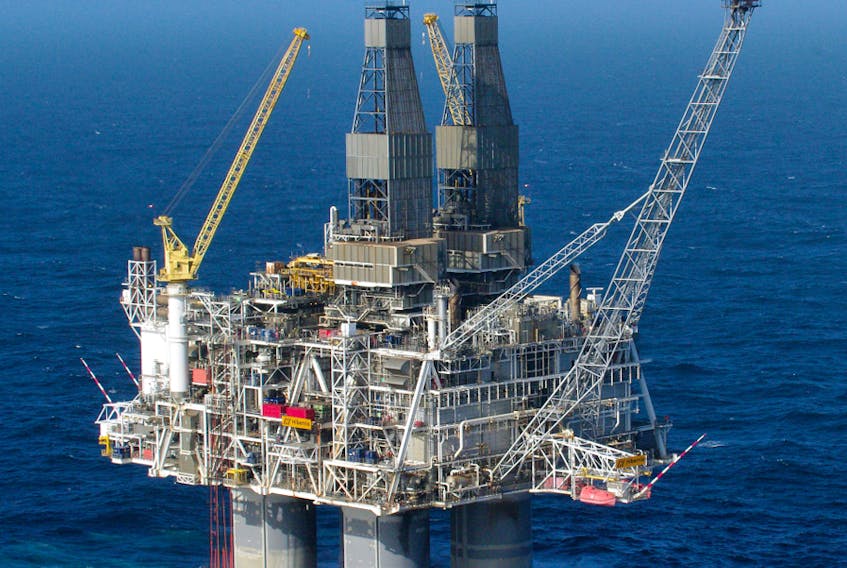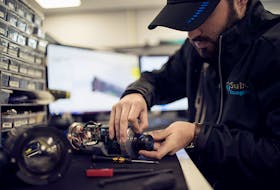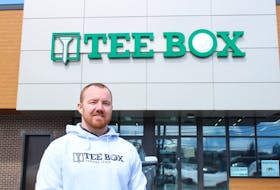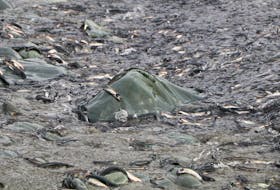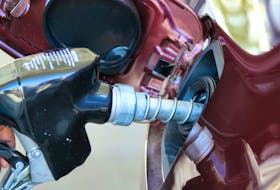Newfoundland and Labrador is expecting a wave of oil and gas exploration in the province’s offshore waters over the next few years. The deepwater hunt will involve oil and gas companies spending up to $4 billion to identify the province’s next major oil project.
“There’s an unprecedented level of interest for offshore East Coast Canada,” said Jim Keating, executive vice president of offshore development at Nalcor Energy, a Newfoundland and Labrador Crown corporation, which holds minority equity stakes in three of the province’s offshore oil projects, and is responsible for driving further investments in the sector.
“From 2014 to present, we’ve amassed over $4-billion worth of offshore work commitments, which is about 60 per cent of the total ever in offshore Newfoundland and Labrador in its history. And that goes back to the mid-80s,” Keating added, in an interview. “That’s pretty significant.”
Keating says the exploration interest is, in part, due to new geoscience work and changes to how bidding rounds are conducted. “That has really made it a must-be place for some of the world’s best explorers,” he said.
The province has four producing oil projects: Hebron, Hibernia, Terra Nova and White Rose. ExxonMobil Corp., Husky Energy Inc., and Suncor Inc. are the primary operators on those projects, with Chevron Corp. and Equinor ASA (formerly Statoil ASA) also involved.
Husky’s approved West White Rose project is now under construction and expected to produce first oil by 2022. That would mark the province’s fifth producing project. A sixth production site could materialize if Equinor develops its Bay du Nord project in the Flemish Pass area, roughly 500 kilometres east of St. John’s.
The province’s four existing offshore projects have produced 1.9 billion barrels of oil since production started at Hibernia in 1997. Current production at the four projects averaged 257,000 barrels per day this year, down from 2007’s peak monthly production of 426,680 barrels per day.
The Canadian Association of Petroleum Producers forecasts Atlantic Canada’s production, led by Newfoundland, to peak around 354,000 bpd by 2026, before falling to 185,000 bpd by 2030.
Keating predicts the potential Bay du Nord project — and perhaps even just increased production at Hebron — to push production to new peaks. “So our peak day is yet to come even with the projects that we know about, let alone the ones that we have yet to discover,” he said.
“It’s not inconceivable to me that with modern technology and modern capabilities, that there are not another four projects out there just waiting to be discovered. In actual fact, I think it’s almost a geologic certainty that there’s going to be other major projects discovered. I guess the question is when and where.”
New entrants — including China’s CNOOC Ltd. (formerly Nexen), BP PLC., HP Group Ltd. out of Australia, and Houston-based Navitas Petroleum — have joined the five existing oil and gas players in holding exploration licences, according to Nalcor.
The areas under, or slated for, exploration are all further offshore than the province’s active projects, meaning drilling will take place in much deeper water.
ExxonMobil is currently drilling in the Flemish Pass, the first exploration associated with the new licencing setup. The other eight licence holders are expected to start their new hunts as early as next year, as well as through 2021 and 2022, notes Paul Barnes of CAPP, which counts as members all the companies involved with production and exploration in Newfoundland and Labrador.
The companies involved in exploration have proposed 10 drilling projects over the next two to four years, with upwards of 100 wells proposed in their applications.
“That’s a fair amount of exploration activity and the reason we’re really excited is that there’s hope there will be some more discoveries,” Barnes said in an interview. “Because beyond what’s really discovered to date, there is no next large discovery that will go into production.”
Globally, offshore oil production accounts for 27 million barrels per day and is expected to peak by around 2020, according to Sanford C. Bernstein & Co. LLC, an investment research firm.
“The non OPEC pre-FID (final investment decision) pipeline is dominated by Brazil, Guyana, and Mexico … there is an incredibly long tail of small projects which means lots of project FIDs competing for uncertain demand,” wrote Bob Brackett, an analyst at Bernstein, in a note to clients.
Future growth of the relatively more expensive offshore developments depend on whether U.S. shale resources slow down and whether the oilsands can see continued growth.
Royal Dutch Shell PLC.’s decision in October to pull out of expensive offshore projects in Kazakhstan underscores the economic uncertainty of underwater reserves around the world, and casts doubt over major oil companies’ appetite for offshore projects at a time when oil prices are expected to remain subdued for the foreseeable future.
But Barnes disputed the suggestion that the current round of exploration represents the province’s last opportunity to benefit financially from its oil holdings. “I don’t really get a sense of that. I think most people in our industry — and government as well — still view this as a long-term endeavour.”
Also clouding the industry’s rosy outlook are concerns from the province’s fishing industry, and the threat of more oil spills off the province, where four spills have occurred since 2018, including 250,000 litres released at Husky Energy’s White Rose field in November 2018. The largest spill in the province’s history led to the shutdown of the SeaRose floating production storage offloading vessel.
Nalcor says independent research assessments have identified potential for 52.2 billion barrels of oil and 199 trillion cubic feet of natural gas, all within areas that make up just nine per cent of the province’s offshore area, which totals 1.8 million square kilometres.
“That’s what’s giving them (the oil and gas companies) the ability to seek the level of commitment funding that today amounts to $4 billion,” Keating said. “So it’s a pretty good story. And it’s a story where every year a new chapter is written.”
The industry’s obvious optimism appears justified but the potential payoff is far off, says Patrick Brannon, the director of major projects at the Atlantic Provinces Economic Council, a Halifax-based think tank.
“The industry has gone through a bit of a downturn over the last few years but things are starting to stabilize,” he said in an interview, pointing to potential expansions and the emergence of new players.
“There’s definitely cause for some optimism over the next few years but exploration certainly takes a while to turn into something significant in terms of production or new developments,” he added. “Those timelines are quite long.”
Newfoundland and Labrador’s offshore contrasts with Nova Scotia’s, where natural gas production ended in 2018. “At this point things are moving in the right direction for Newfoundland and Labrador’s offshore,” Brannon concluded.
Challenges remain, however, including the industry’s hunt into deeper water, further offshore. The first big test in that deep water could arrive if Equinor decides to proceed, with partner Husky, in developing the Bay du Nord project. Discovered in 2013, the project’s 300 million barrels of recoverable oil are located in water 1,200-metres deep, nearly 500 kms offshore. (The four existing projects are all roughly 350 kms offshore, in depths of roughly 100 metres).
“This is not what you call a walk in the park,” Unni Fjaer, a vice president at Equinor Canada, said in an interview. “We definitely need to do more work on the project to be more definitive on (our) answer.”
Fjaer said the company expects to make a final investment decision in mid-2021, with production to likely start in 2025, if sanctioned. “To decide whether we go ahead with Bay du Nord or not is a long process,” Fjaer added.
If developed, the project is expected to produce oil for 10 years and cost $10.9 billion. “It’s a relatively small project,” Fjaer added. “It’s only 300 million barrels. It’s not big.”

